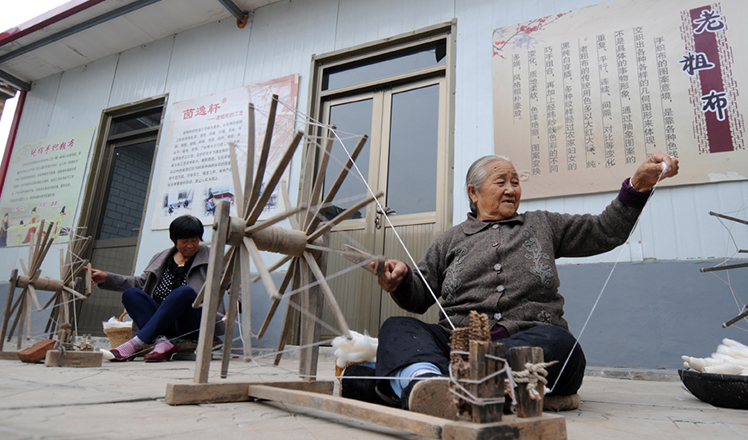Targeted policies will stop property market overheating
Updated: 2016-10-20 07:53
By Eva Lee(China Daily)
|
||||||||
 |
|
Prospective buyers attend a real estate trade fair in Chengdu, capital of Sichuan province, on Oct 3, 2016. [Photo/For China Daily] |
The recent upcycles in the mainland's housing market has been different from previous ones, property prices have risen rapidly in only a small group of cities following the easing of the restrictions on mortgages. Just 22 cities out of top 70 cities registered price rises of more than 5 percent year-on-year, which was substantially fewer than in past market upturns. In November 2013, 67 out of top 70 cities enjoyed price increases of more than 5 percent year-on-year, and 59 cities did so in April 2010.
However, even though house prices have risen dramatically in only a relatively small number of cities after the policy easing, the price increases have been higher than in the previous upturns. The tier-one cities have registered price increases of up to 38 percent year-on-year and in select tier-two cities prices have risen by up to 45 percent year-on-year. The price increases in previous upcycles were in the range of 10-20 percent year-on-year. The fact that just a small group of cities have experienced high rises in house prices this time, explains why these local governments are under pressure to tighten their policies.
Since the regulations are targeted to curb the investment demand in these particular cities, we expect they will be effective in cooling the sentiment in these markets and slow the pace of price rises in these cities. The policies differ among different cities. But generally, the policies involve restrictions that limit the number of units a household can purchase and raise the down payment requirements for first homebuyers and those upgrading. Since these policies target only demand in cities that have experienced high price increases, they are not blanket policies and so might squeeze some buying demand to other lower tier cities located in the vicinity. Given that the targeted cities have relatively lower inventory levels, it is unlikely to trigger a significant price correction. However, it should trigger a slowdown in property sales volumes in the coming months.
The higher housing leverage over the past 12 to 15 months has been driven by the lowering of minimum down payment requirements and the loosening of overall monetary liquidity. However, the accumulated mortgage loans as a percentage of GDP remain at low levels when compared to the other developed countries. We consider housing leverage has not reached a risky level. In fact, the government's prompt response to the fast buildup of household leverage should help protect the market from running into a risky condition.
We expect the growth of new starts, the momentum of price increases and growth of housing demand to slow in 2017. GDP growth in 2016 has been relying on the growth of new construction starts, however, new construction starts will probably no longer be a key driver next year.
The tightening measures are expected to slow the growth of new starts, particularly in tier-two cities. Our analysis indicates that the uptrend of property prices and faster growth of home sales have been the key factors driving the recovery of new starts over the past upcycles. The growth of new starts in tier-two cities has registered the sharpest growth year-to-date, which has been supporting new starts nationwide. With the slowing growth of sales and price growth in most tier-two cities, it will encourage developers to accelerate their contraction plans in the coming six to 12 months. In addition, land prices are increasing faster than property prices, which will also discourage developers from speeding-up their construction in a challenging market.
To conclude, we consider this round of tightening measures should be effective in slowing the fast pace of property price increases and help lower sales volumes in the cities that have implemented new policies. We consider the current household leverage as a percentage of GDP hasn't reached a risky level. The tightening policies will inevitably weaken developers' investment sentiment and slow their construction starts. Hence, it will affect the growth of new starts next year and they will be unlikely to be a key growth driver of GDP next year.
The author is head of China Property Research, UBS Investment Bank.
- Cooling measures for property markets will only affect speculators: Statistics Bureau spokesman
- China's property investment growth further accelerates
- 21 cities introduce new regulations to curb property speculation
- Property judgment's far-reaching implications for local developers
- China to restrain credit growth amid property restrictions
- Local governments attempt to cool overheated property market
- China cracks down on property developers, intermediaries

 Glimpse into lifestyle of astronauts in space
Glimpse into lifestyle of astronauts in space
 Shenzhou XI spacecraft docks with Tiangong-2 space lab
Shenzhou XI spacecraft docks with Tiangong-2 space lab
 Typhoon Sarika makes landfall in South China
Typhoon Sarika makes landfall in South China
 Handmade coarse cloth gets new shine
Handmade coarse cloth gets new shine
 World in photos: Oct 10 - 16
World in photos: Oct 10 - 16
 Fairing fragments of Shenzhou XI found in Shaanxi
Fairing fragments of Shenzhou XI found in Shaanxi
 Feast for the eyes: Photo Beijing 2016
Feast for the eyes: Photo Beijing 2016
 China's Shenzhou spaceship: A proud family
China's Shenzhou spaceship: A proud family
Most Viewed
Editor's Picks

|

|

|

|

|

|
Today's Top News
'Zero Hunger Run' held in Rome
Trump outlines anti-terror plan, proposing extreme vetting for immigrants
Phelps puts spotlight on cupping
US launches airstrikes against IS targets in Libya's Sirte
Ministry slams US-Korean THAAD deployment
Two police officers shot at protest in Dallas
Abe's blame game reveals his policies failing to get results
Ending wildlife trafficking must be policy priority in Asia
US Weekly

|

|









